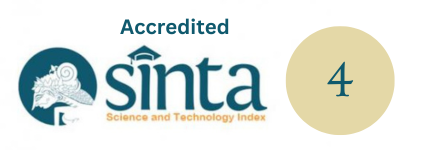Introduction to “Achromatic” Karawitan Artwork | Pengantar Karya Seni Karawitan “Achromatic”
DOI:
https://doi.org/10.59997/jurnalsenikarawitan.v1i2.214Keywords:
Akromatik, Semarandana, ExpresionismAbstract
Achromatic karawitan artwork refers to the concept of work on gamelan creativity. The background of this creation artwork took roots based on traditional art, this music created as a result of traditional development until nowadays. In the creation of this karawitan artwork, the composer used the part of the Gamelan Semarandana, which consists of: a kajar, two pieces tungguh gangsa and kantil, two tungguh jublag and jegog. According to the composer, the instrument chosen in this work is very appropriate to transform the concept of the artwork, such as using a combination of different sound characters from each instrument, as well as the use of color combinations in the expressionism genre in painting called Achromatic. The composition creativity process by the composer applied refers to the three stages, namely exploration, improvisation and forming stage. The purpose of this artwork is to transform the concept of expressionism genre in painting into the Karawitan artwork entitled Achromatic. Achromatic is formed from the combination of the composer expressions and the combination of the results of the sound character between the blade and the pencon on each instrument used. This is an inspiration in life, especially for artists, that every time the feeling that arises, at any time, then the feeling can be transformed into a work of art.
Downloads
References
A.A.M.Djelantik. 1999. Estetika: Sebuah Pengantar. Bandung: Masyarakat Seni Pertunjukan Indonesia (MSPI).
Arya Sugiartha. 2012. Kreatifitas Musik Bali Garapan Baru Perspektif Cultural Studies. Denpasar: UPT Penerbitan ISI Denpasar.
Aryasa, IWM W.M. Dkk. 1985. Pengetahuan Karawitan Bali. Denpasar: Departemen Pendidikan dan Kebudayaan Bali.
Bandem, I Made. 1986. Prakempa Sebuah Lontar Gambelan Bali. Denpasar: ASTI Denpasar.
———. 1987. Ubit-Ubitan Sebuah Teknik Gamelan Bali. Denpasar: Sekolah Tinggi Seni Indonesia Denpasar.
———. 2013. Gamelan Bali Diatas Panggung Sejarah. Denpasar: BP. STIKOM BALI.
Banoe, Ponoe. 2003. Kamus Musik. Yogyakarta: Kanisius.
Kartika, Dharsono Sony. 2004. Seni Rupa Modern. Bandung: Rekayasa Sains.
Putu Paristha Prakasih, Hendra Santosa, I Gede Yudarta et al. 2018. “Tirtha Campuhan: Karya Komposisi Baru Dengan Media Gamelan Semar Pagulingan.” Resital: Jurnal Seni Pertunjukan 19(3): 113–21. http://journal.isi.ac.id/index.php/resital/article/view/2452.
Santosa, Hendra; Saptono. 2016. “Gamelan Sistem Sepuluh Nada Dalam Satu Gembyang Untuk Olah Kreativitas Karawitan Bali.” Pantun 1(2): 85–96. https://jurnal.isbi.ac.id/index.php/pantun/article/view/747.
Saptono, Tri Haryanto, and Dru Hendro. 2019. “Greng Sebuah Estetika Dalam Kerampakan Antara Gamelan Dan Vokal.” KALANGWAN Jurnal Seni Pertunjukan 5(1): 29–38.
Sukerta, Pande Made. 2009. GONG KEBYAR BULELENG: Perubahan Dan Keberlanjutan Tradisi Gong Kebyar. Surakarta: Program Pascasarjana bekerjasama dengan ISI Press Surakarta.
Suweca, I Wayan. 2009. Estetika Karawitan. Denpasar: Fakultas Seni Pertunjukan Institut Seni Indonesia Denpasar.
Tenzer, Michael. 1998. Balinese Music. Periplus Edition, (HK) Ltd.








